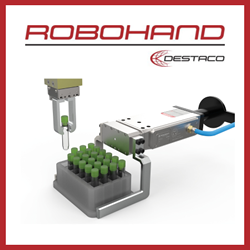Lockheed Martin Unveils Samarai Flyer at Unmanned Vehicle Conference
Inspired by a maple seed, Lockheed Martin's Samarai handheld vehicle flew publically for the first time today at the Association for Unmanned Vehicle Systems International conference.
Weighing less than half a pound, Samarai demonstrated vertical takeoff and landing, stable hover, and on-board video streaming. While the aircraft flew a series of flights in the roughly 40 foot test area, it streamed live video from a camera that rotated around its center providing a 360 degree view without a gimbal.
"Our team has taken the basic shape and design of the naturally aerodynamic maple seed and harnessed it with flight controls and avionics," said Kingsley Fregene, principal investigator for Samarai at Lockheed Martin's Advanced Technology Laboratories. "We've learned a great deal about biologically inspired vehicles that we can apply across the laboratory, including a better understanding of micro-robots and the devices that control their movement."
Samarai is mechanically simple with only two moving parts. Because its 16 inches long and weighs less than half a pound, an operator can easily carry the vehicle in a backpack and launch it from the ground or like a boomerang. The design is scalable to meet different missions, including surveillance and reconnaissance and payload delivery.
Lockheed Martin tested the first 3-D printed Samarai last week. The vehicle was produced by "printing" successive small layers of plastic to create a single form. The printer eliminates expensive production costs, allowing engineers to quickly and affordably produce Samarai tailored to specific missions.
Headquartered in Bethesda, Md., Lockheed Martin is a global security company that employs about 126,000 people worldwide and is principally engaged in the research, design, development, manufacture, integration and sustainment of advanced technology systems, products and services. The Corporation's 2010 sales from continuing operations were $45.8 billion.
Featured Product

DESTACO - Revolutionizing Industrial Automation
Looking for a reliable solution to enhance your automation process? Look no further than the DESTACO Robohand Grippers. These grippers are designed for the modern world of robotics, offering unparalleled performance and precision. Whether you need to grip fragile items, irregularly shaped objects, or heavy-duty components, the DESTACO Robohand Grippers have got you covered. Their modular design allows for quick and easy customization, ensuring a perfect fit for your application.
